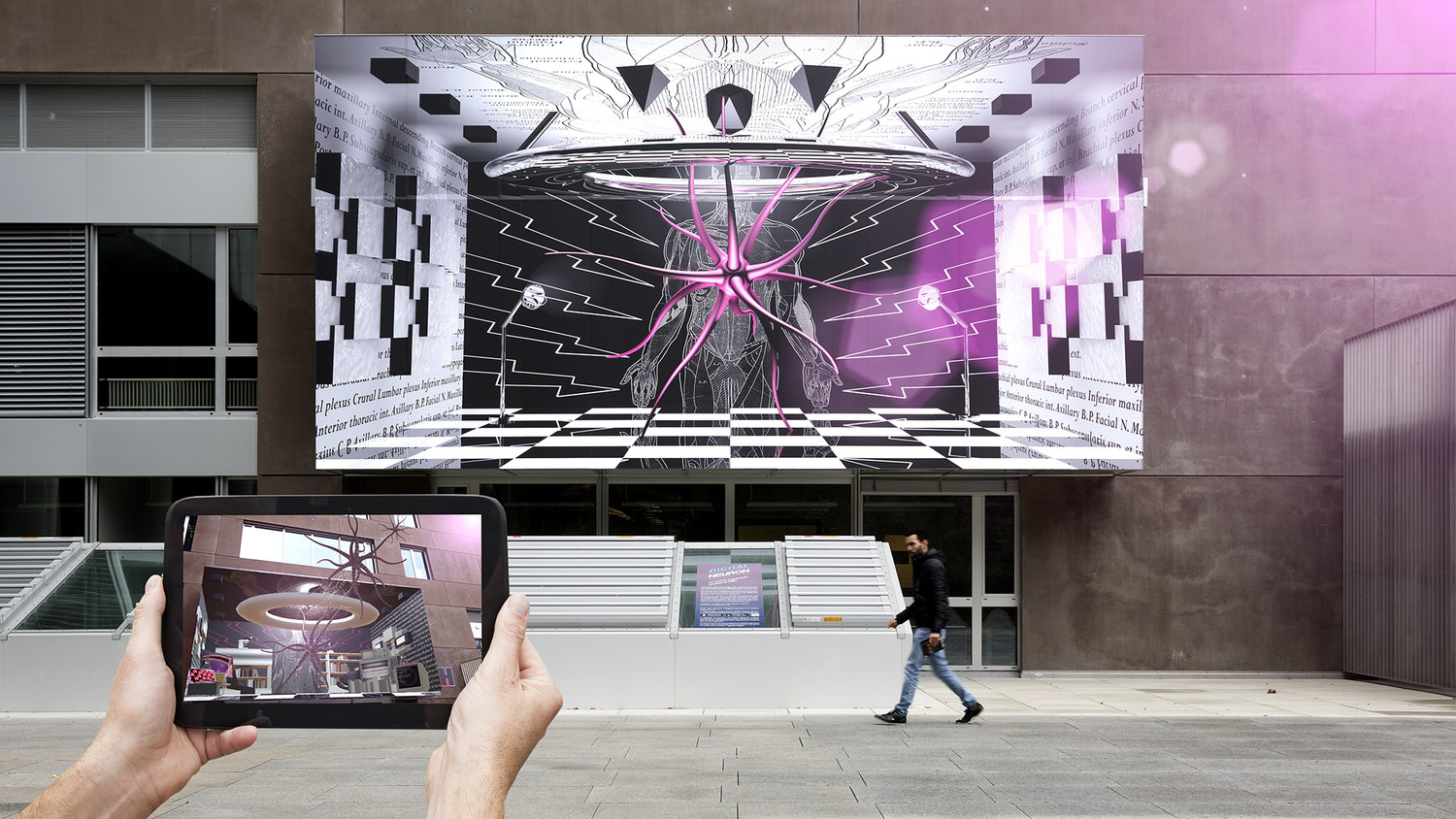Architects: Want to have your project featured? Showcase your work through Architizer and sign up for our inspirational newsletters.
From the charming historic neighborhoods of Savannah to the modern urban landscapes of Atlanta, Georgia’s residential architecture tells a story of history, culture and innovation. Nestled in the heart of the South, the state boasts a diverse range of architectural styles, from historic mansions to contemporary eco-friendly homes. Now, architects and designers are rethinking the characteristics that define residential design across Georgia.
Many of Georgia’s older historic homes are characterized by large columns, expansive porches and intricate detailing, offering a glimpse into a bygone era. These antebellum estates, often surrounded by lush gardens and towering oak trees, evoke the passing of time. In contrast, Georgia’s modern residences embrace innovation and sustainability, with architects incorporating new design principles and eco-friendly materials to create homes that are as functional as they are visually striking. Across these projects, residential design in Georgia reflects a deep appreciation for craftsmanship and beauty. The following home designs explore what contemporary single-family housing looks like in Georgia today.
Morningside Residence
By Square Feet Studio, Atlanta, Georgia
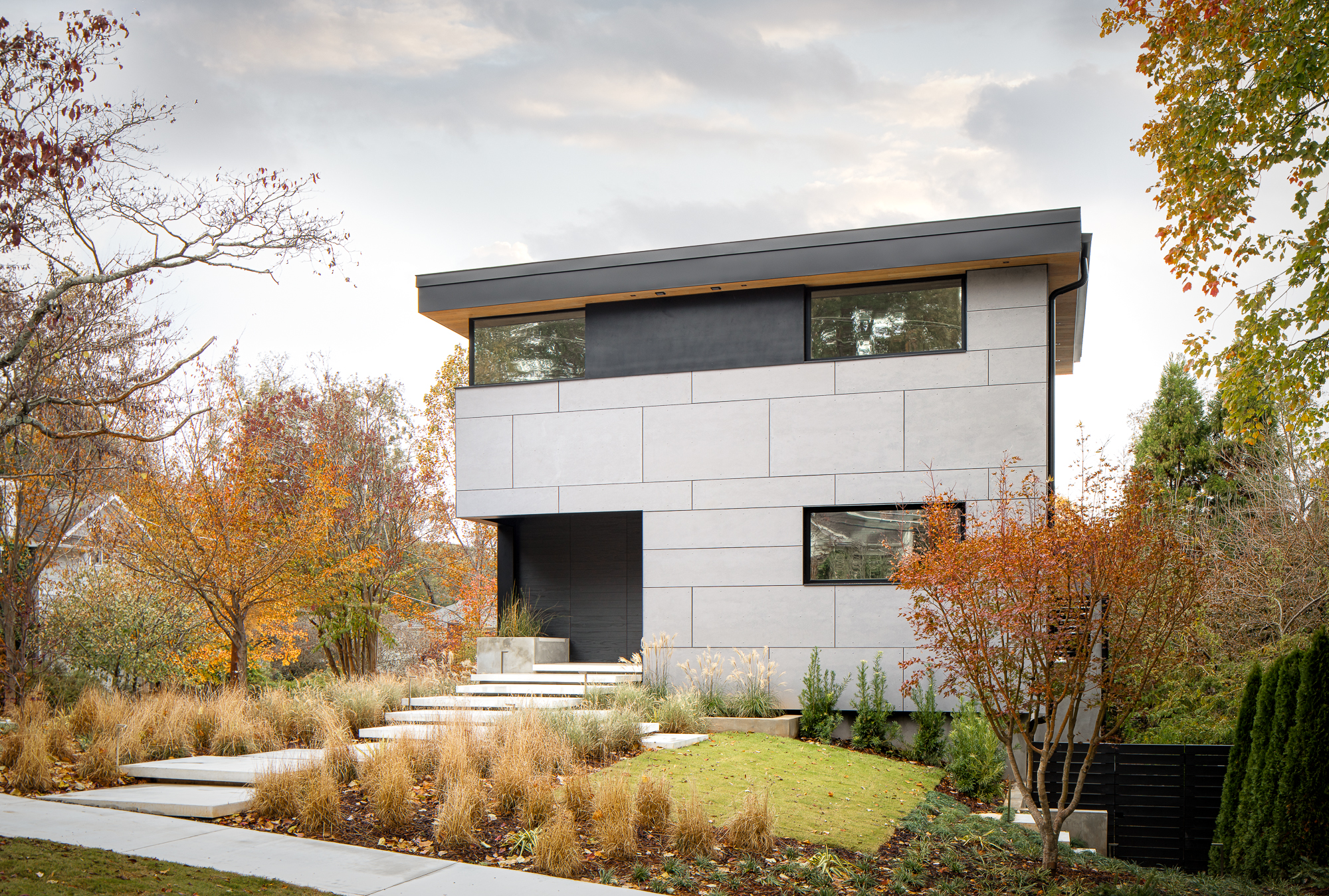
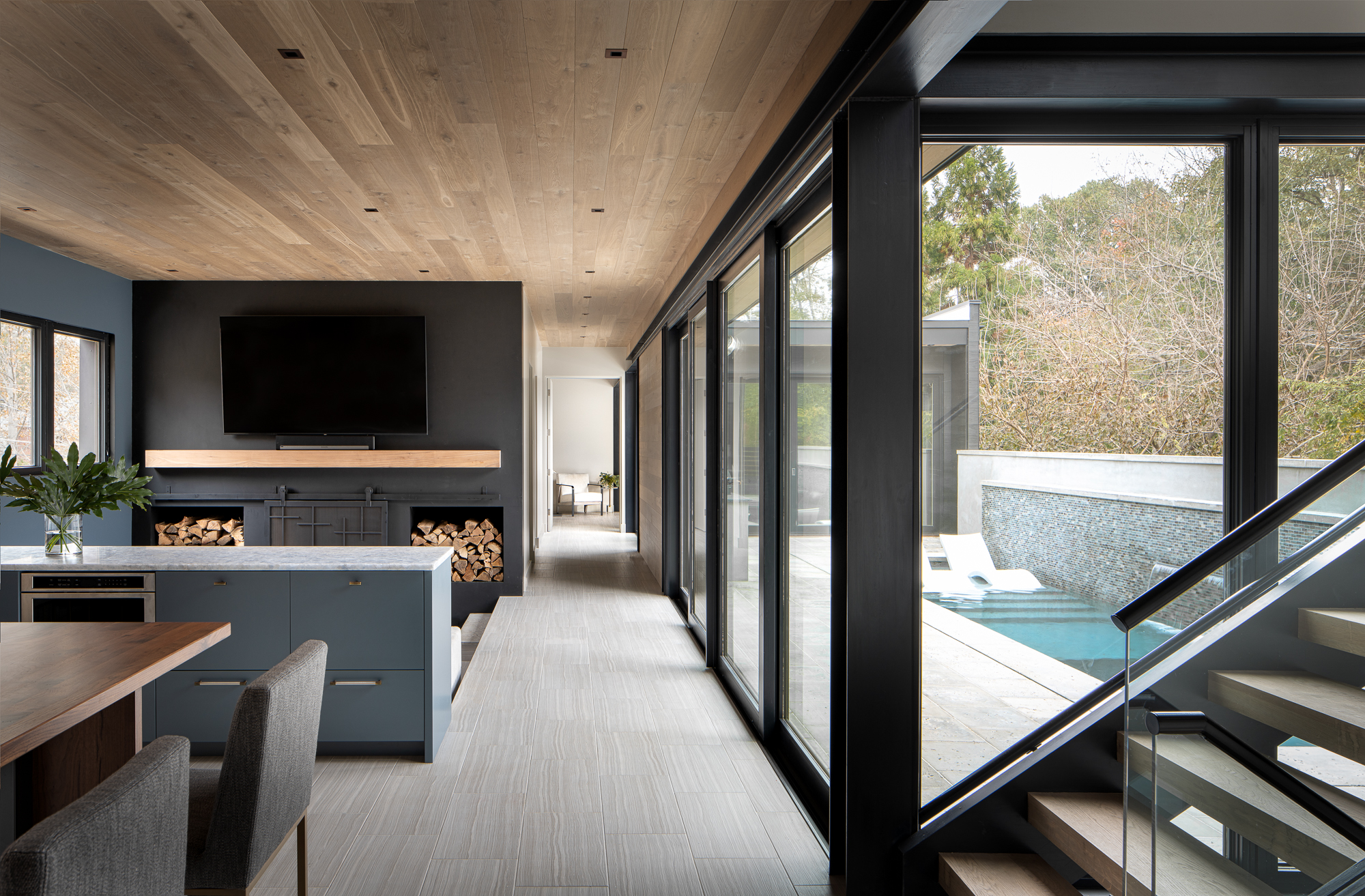
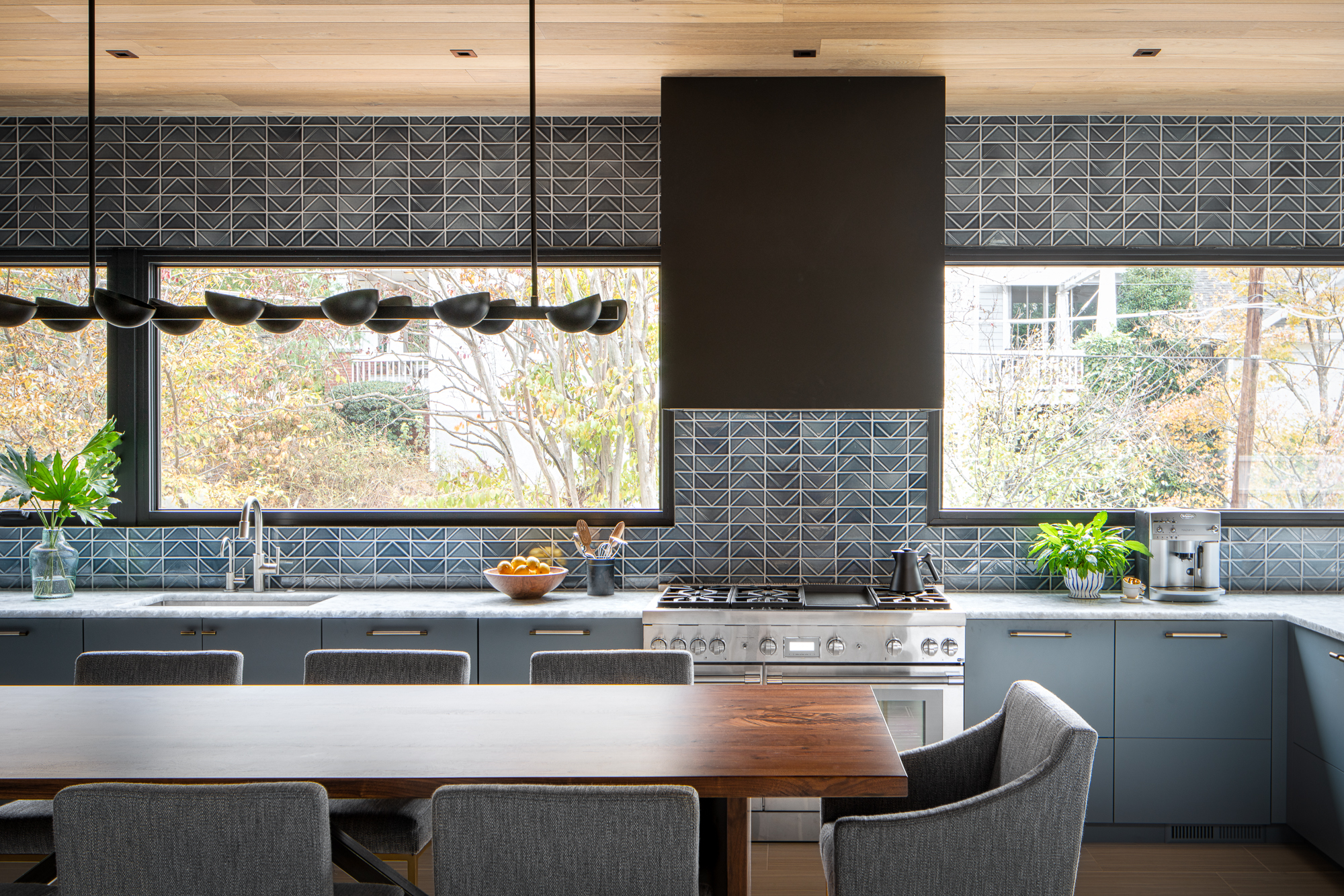 The brief for this residence was to design a modern, resort-like forever home for a professional couple. The house features two simple forms perched atop a concrete foundation on a steep, narrow site. Despite their appearance, these forms open up to reveal a spacious interior filled with natural light, with a focus on an inviting pool terrace. The design emphasizes structural expression and durable, tactile materials throughout.
The brief for this residence was to design a modern, resort-like forever home for a professional couple. The house features two simple forms perched atop a concrete foundation on a steep, narrow site. Despite their appearance, these forms open up to reveal a spacious interior filled with natural light, with a focus on an inviting pool terrace. The design emphasizes structural expression and durable, tactile materials throughout.
Situated in an older, tightly packed neighborhood with traditional homes, the new house blends in seamlessly with its surroundings. Several design choices were made to ensure its integration: most of the lower level is nestled into the site, reducing its visual impact; the upper level is modest in size, minimizing the roof line; the entry is set back from the street, with concrete steps that mimic approaching a neighboring front porch; stepped planting beds along the sidewalk create a gentle transition from the street to the house; and a variance allows the house to be closer to the sidewalk, matching the neighborhood’s typical distance. These steps result in a contemporary home that respects the neighborhood’s character and scale.
Haus Gables
By MALL, Atlanta, Georgia
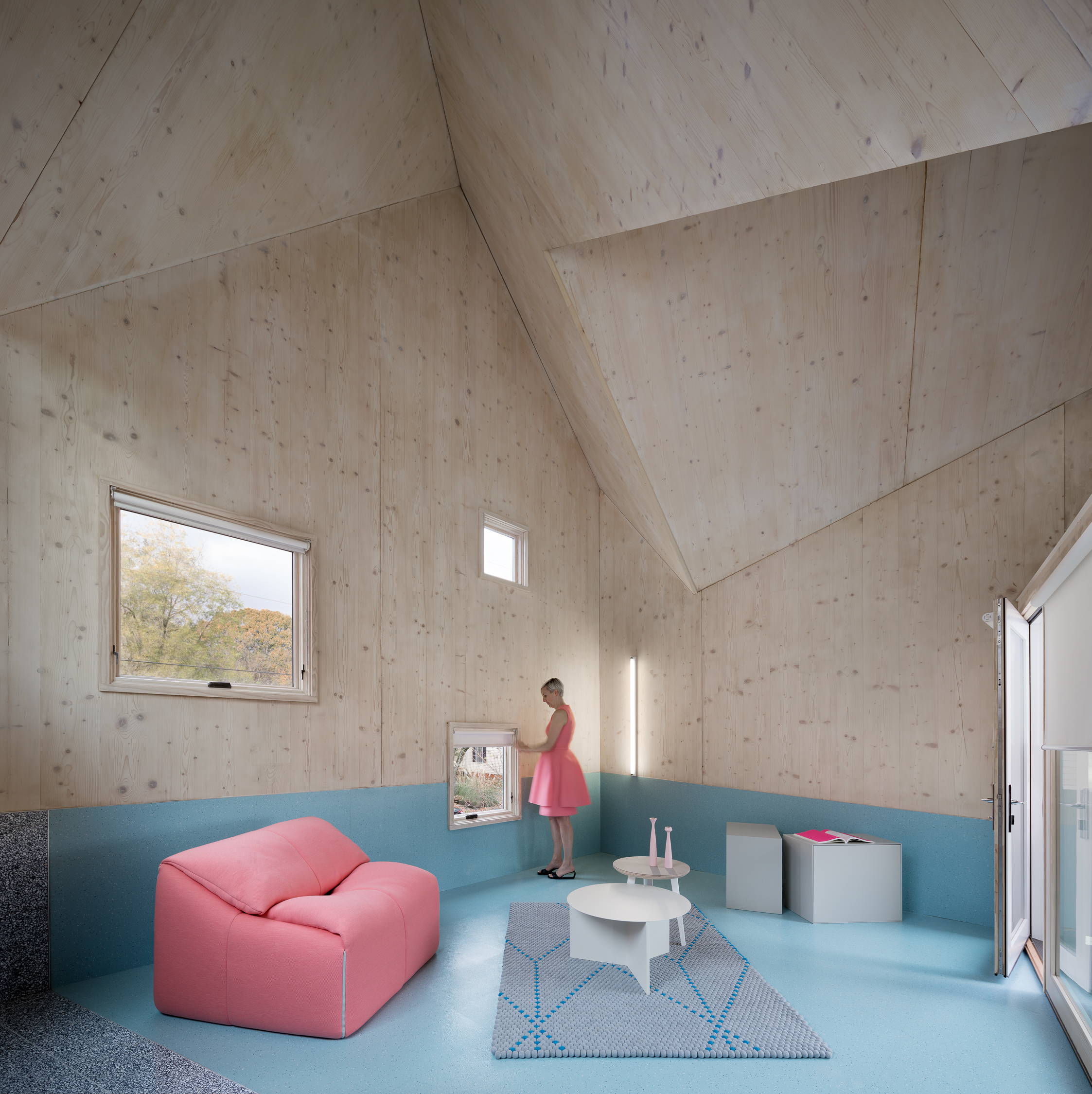
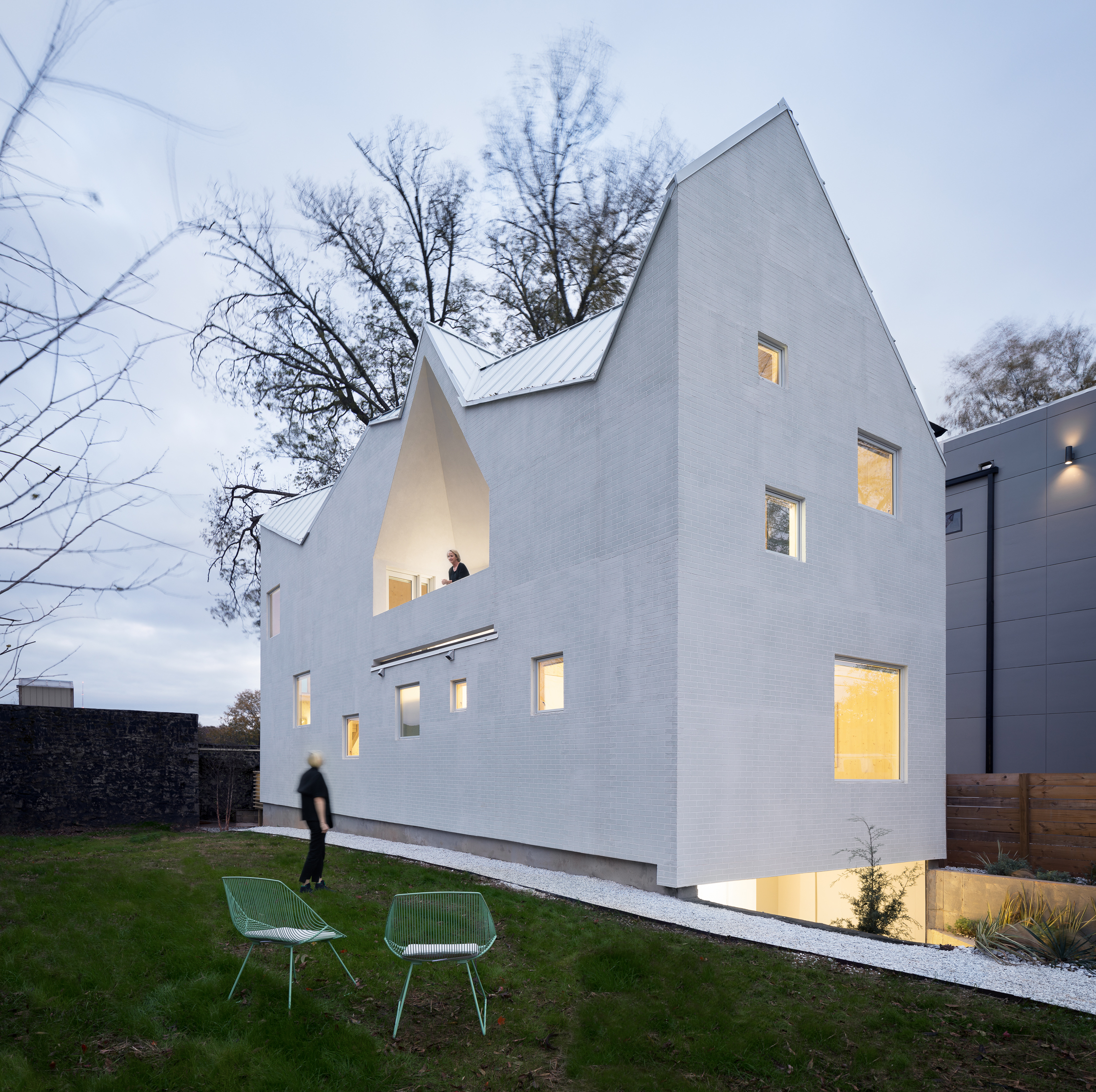
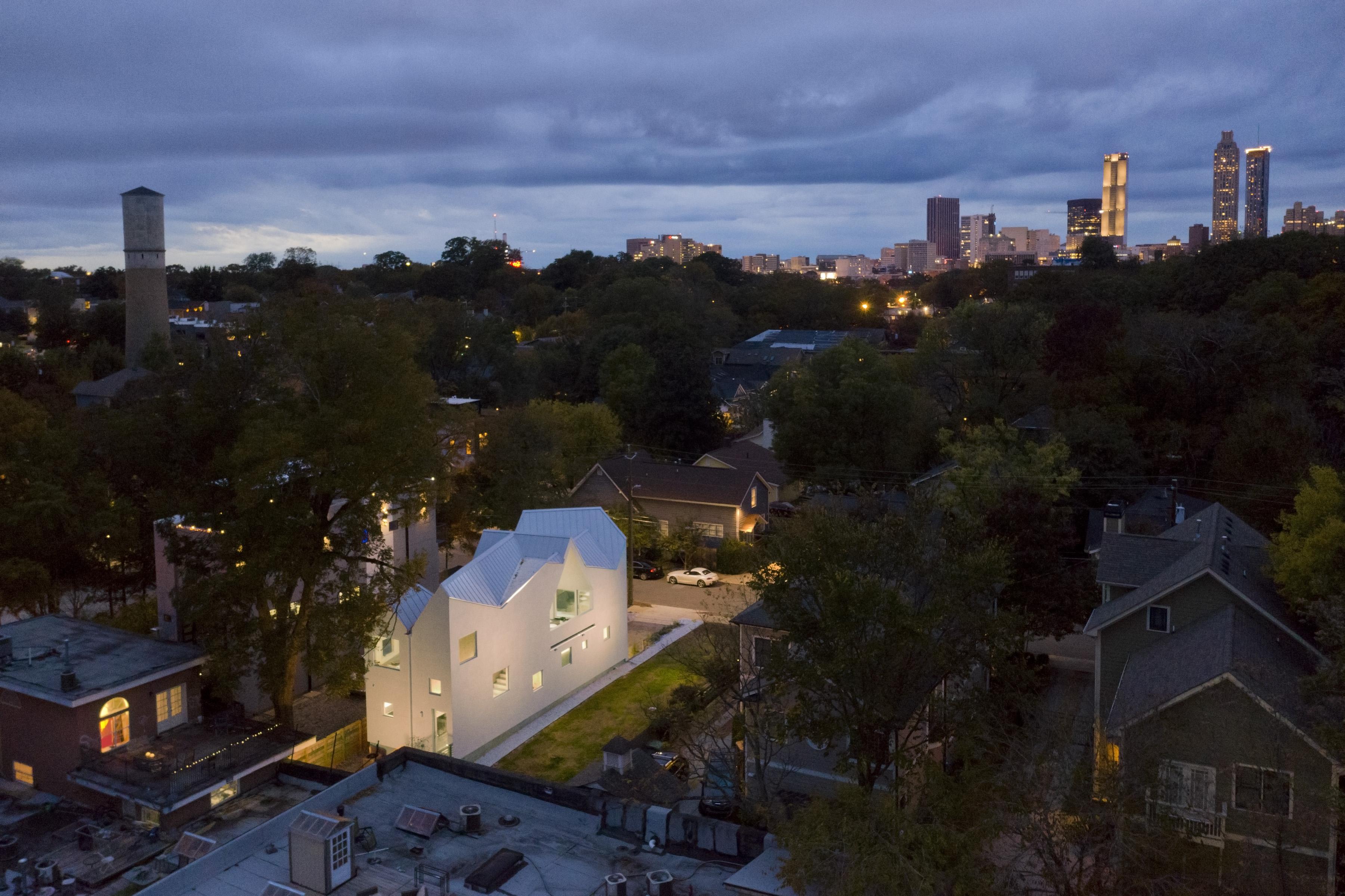 Haus Gables, a unique residential project by architectural designer Jennifer Bonner, challenges traditional design concepts with its innovative use of materials and form. Located in Atlanta’s Old Fourth Ward neighborhood, this 2,200-square-foot home is one of the few in the country made of cross-laminated timber (CLT), offering exceptional strength and a distinctive aesthetic.
Haus Gables, a unique residential project by architectural designer Jennifer Bonner, challenges traditional design concepts with its innovative use of materials and form. Located in Atlanta’s Old Fourth Ward neighborhood, this 2,200-square-foot home is one of the few in the country made of cross-laminated timber (CLT), offering exceptional strength and a distinctive aesthetic.
The house features a cluster of six gable roofs merged into a single roof, redefining spatial organization. The roof plan dictates the interior layout, creating rooms, catwalks, and double-height spaces aligned with ridges and valleys. This approach results in an asymmetrical exterior form, with steep roof pitches and unconventional profiles, alluding to a larger footprint. The innovative use of CLT panels for walls, floors, and roofs allows for quick assembly and promotes a monolithic view of the material from the inside. Additionally, faux finishes such as glittery faux bricks and vinyl marble inside, challenge traditional notions of materiality.
Split Box House
By DiG Architects, Atlanta, Georgia
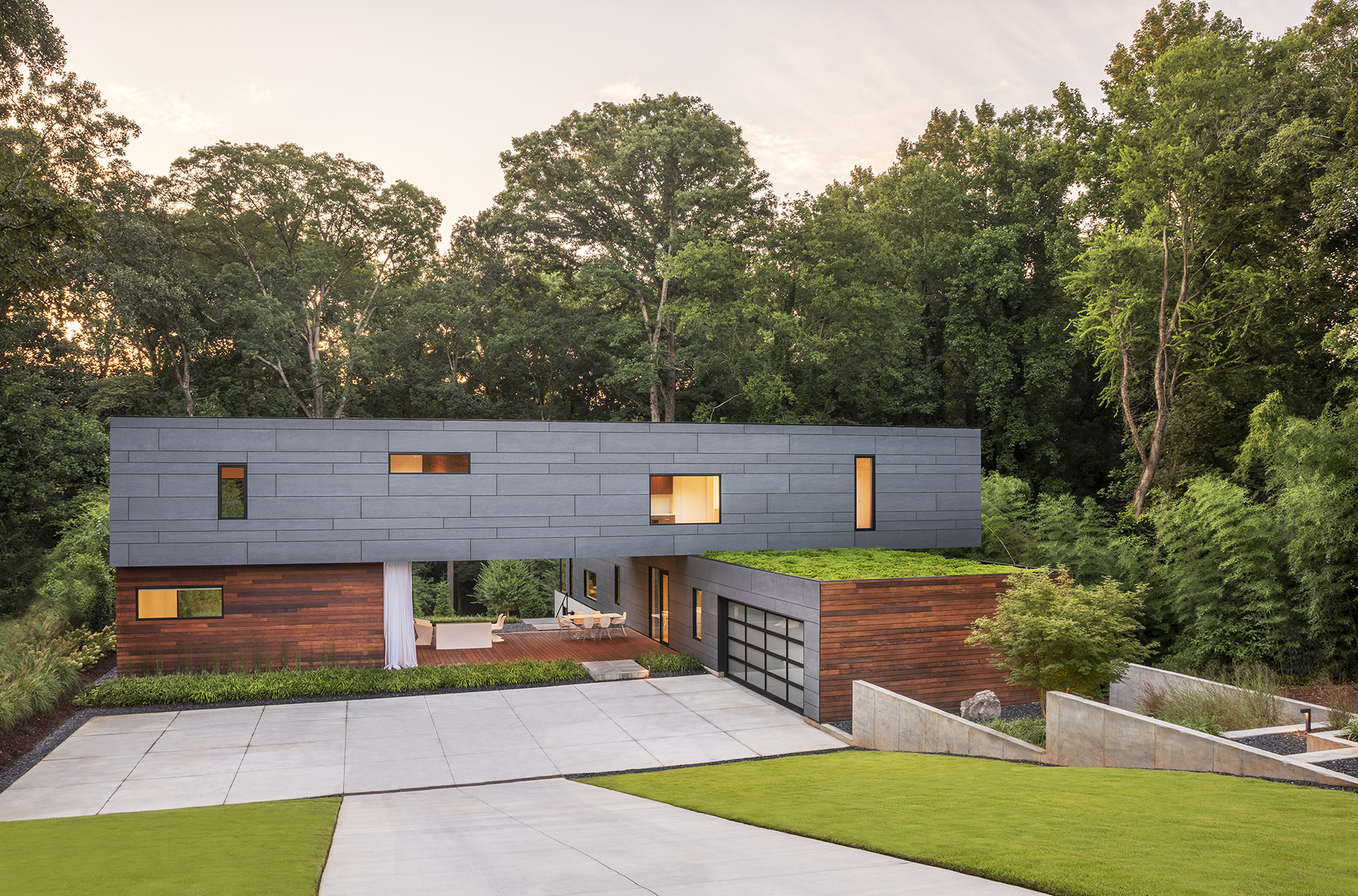

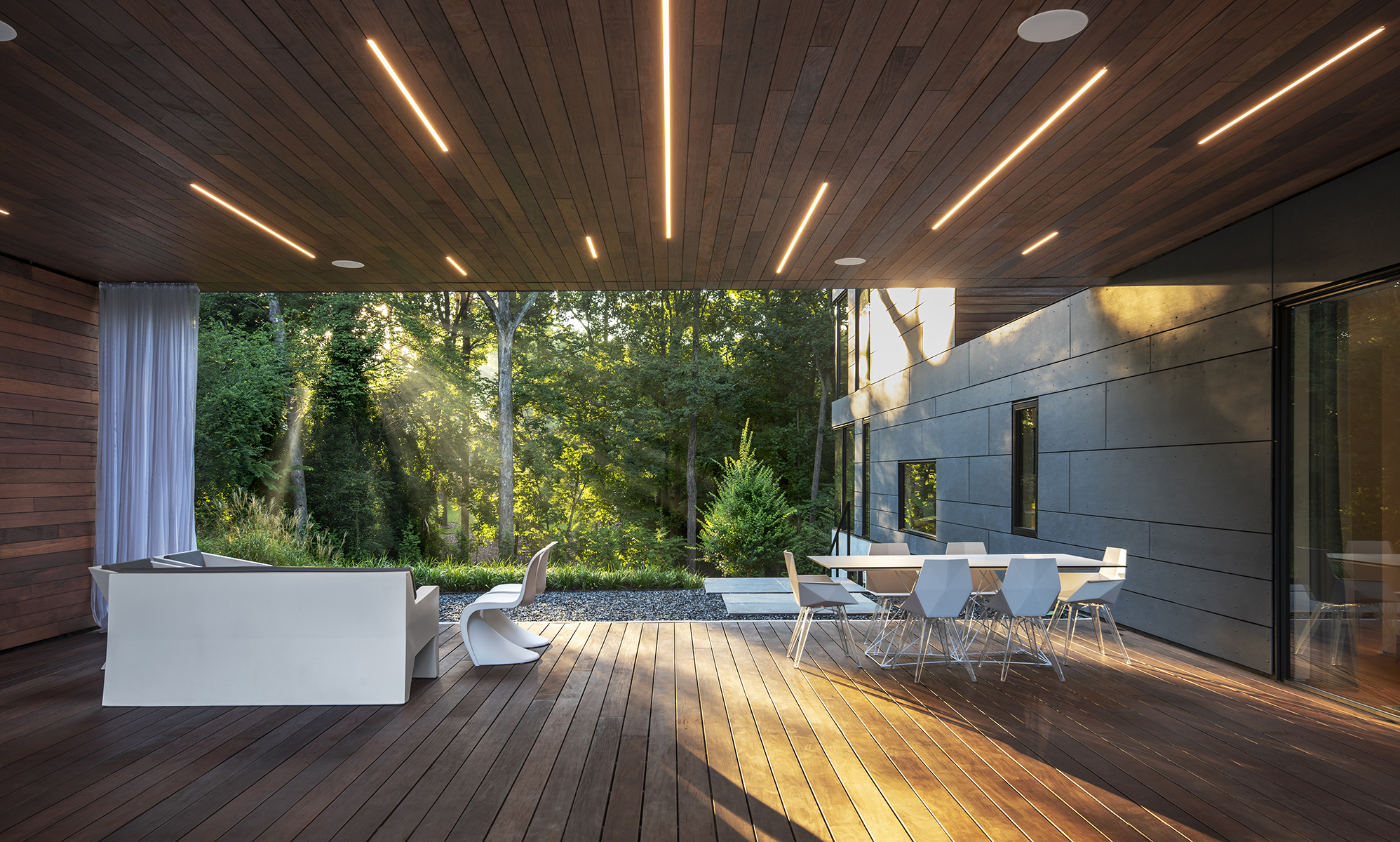 The Split Box House in Atlanta was designed for a family seeking a peaceful retreat from their busy lives. Located near Emory University and the CDC, the house stands out from the surrounding spec homes with its simple, clean design. The twenty-two-foot-wide box structure eliminates the need for interior support walls, creating an open and efficient floor plan. Clad in low-maintenance grey cement panels, the house features a ventilated rainscreen system that manages moisture and reduces energy consumption.
The Split Box House in Atlanta was designed for a family seeking a peaceful retreat from their busy lives. Located near Emory University and the CDC, the house stands out from the surrounding spec homes with its simple, clean design. The twenty-two-foot-wide box structure eliminates the need for interior support walls, creating an open and efficient floor plan. Clad in low-maintenance grey cement panels, the house features a ventilated rainscreen system that manages moisture and reduces energy consumption.
The house is divided into public and private volumes, with the private section rotated to maximize views of the woods behind the house. The use of ipe wood cladding adds a touch of warmth to the exterior. Inside, the public areas flow seamlessly through low and tall spaces, culminating in a double-height sky-lit room that provides natural light throughout the day. The quiet, uncluttered interiors create a calm environment focused on the surrounding nature.
Inchyra House
By Robert M. Cain, Architect, Georgia
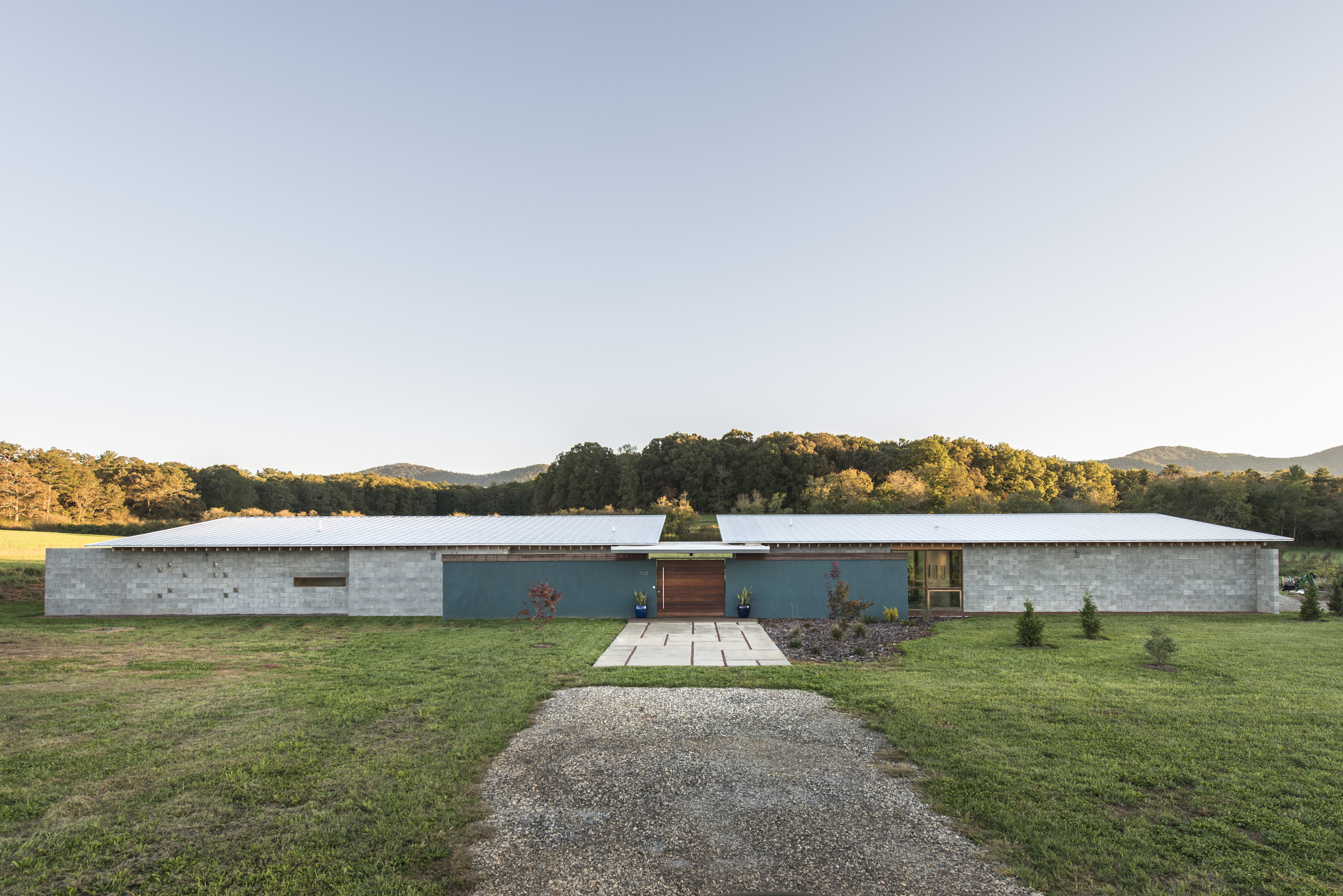
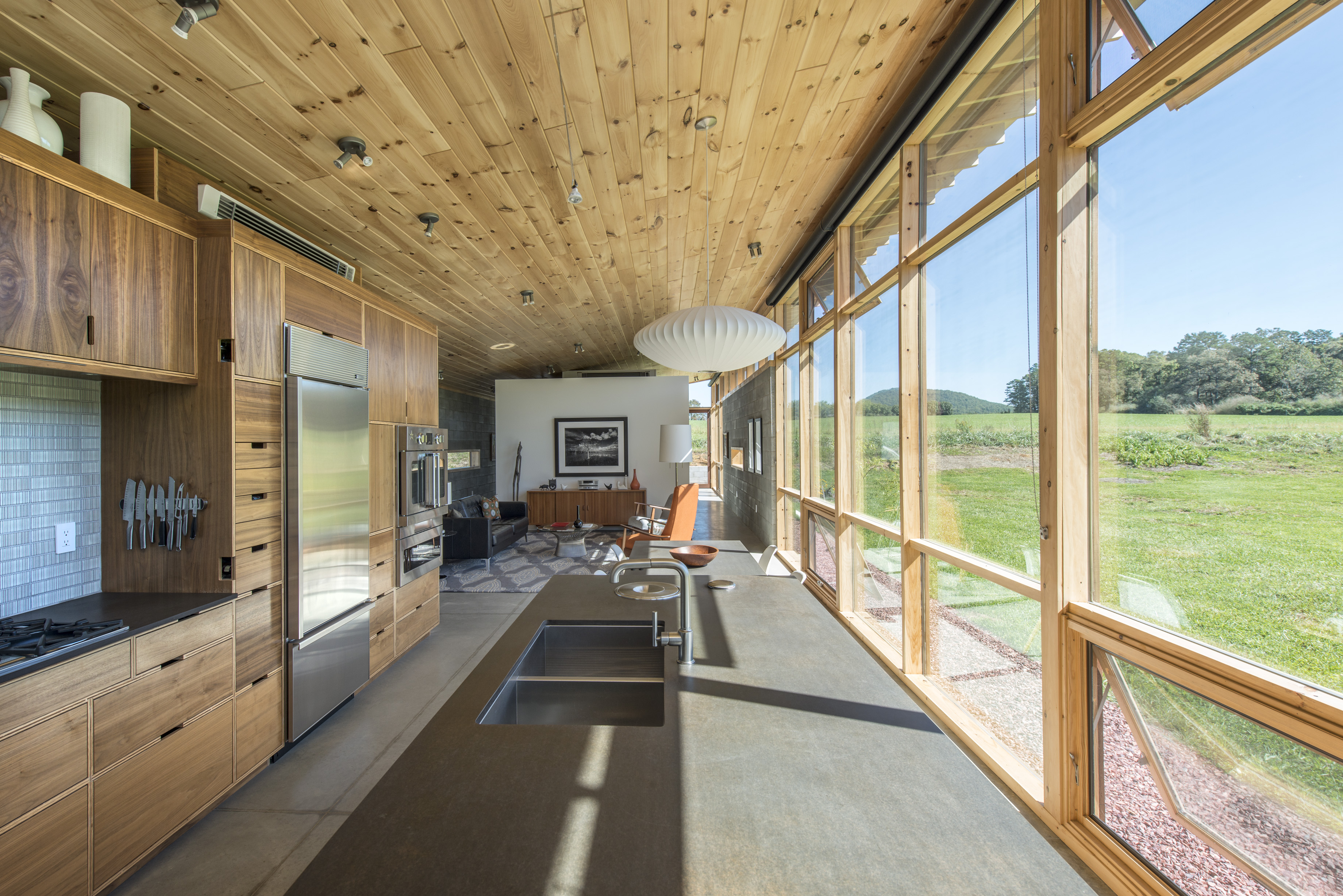
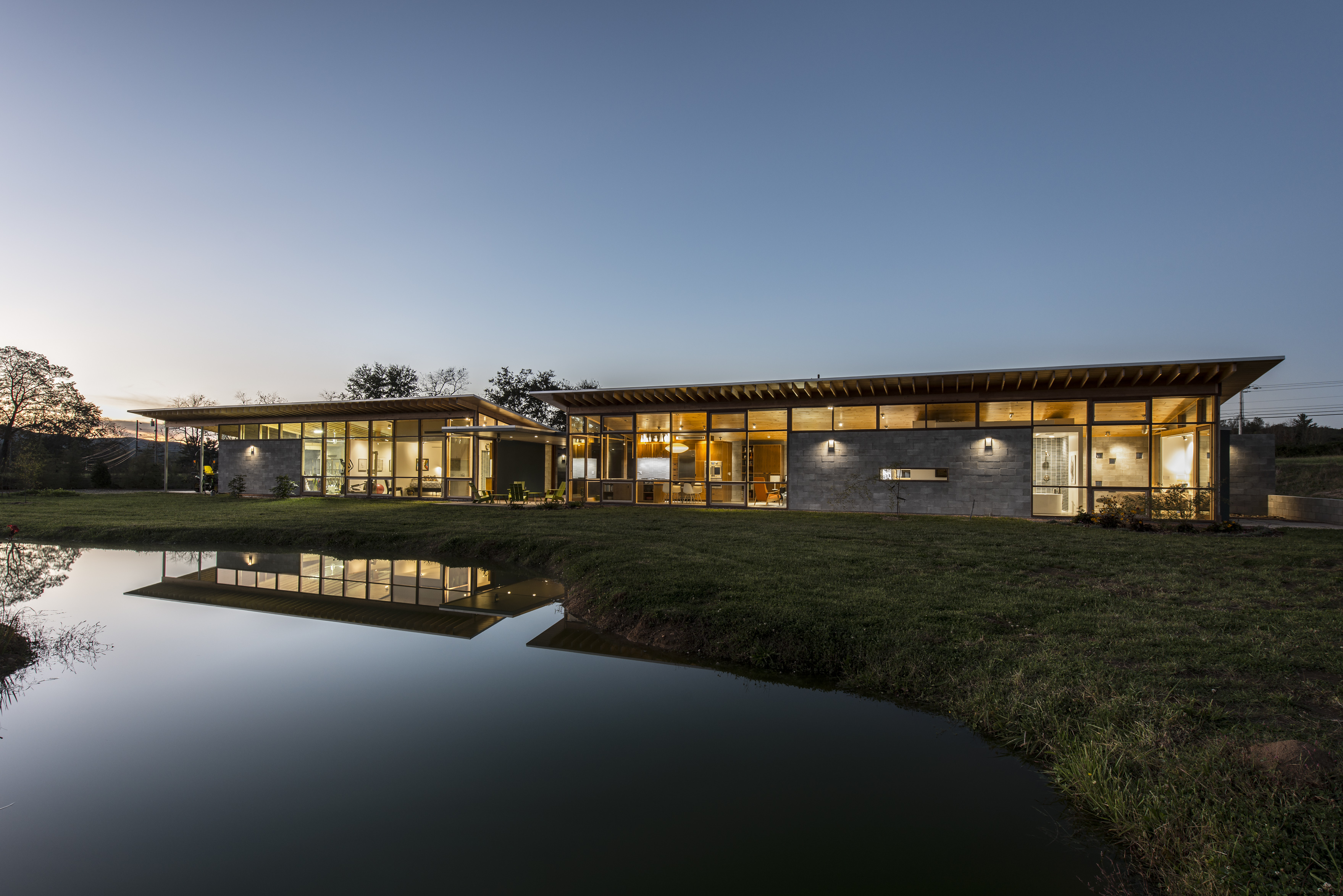 The design of Inchyra Farm reflects the owners’ deep connection to the land and their commitment to sustainability. Located in rural north Georgia, the 10-acre site includes a main house, guest house, greenhouse, orchards and gardens, all planned with a focus on organic gardening, viticulture and sustainable land use. Southern views toward the Chattahoochee National Forest influenced the positioning and layout of the buildings, ensuring a harmonious integration with the landscape.
The design of Inchyra Farm reflects the owners’ deep connection to the land and their commitment to sustainability. Located in rural north Georgia, the 10-acre site includes a main house, guest house, greenhouse, orchards and gardens, all planned with a focus on organic gardening, viticulture and sustainable land use. Southern views toward the Chattahoochee National Forest influenced the positioning and layout of the buildings, ensuring a harmonious integration with the landscape.
The house itself embodies energy conservation and minimalist design principles. The shotgun layout maximizes cross ventilation and livability, with a traditional dogtrot serving as the main entry and open patio living area. The east wing houses day-to-day living spaces, while the west wing accommodates guest rooms, a laundry, shop, gym, and mudroom. Passive and active energy-saving features are incorporated, including extensive eaves for summer shading and thermal mass walls for heating and cooling efficiency. The house’s conditioned space is kept under 1,700 square feet, with unconditioned areas relying on natural ventilation and thermal mass for comfort control. A geothermal heat pump system and Energy Recovery Ventilation further enhance the home’s sustainability.
Lafayette
By TaC studios, Georgia
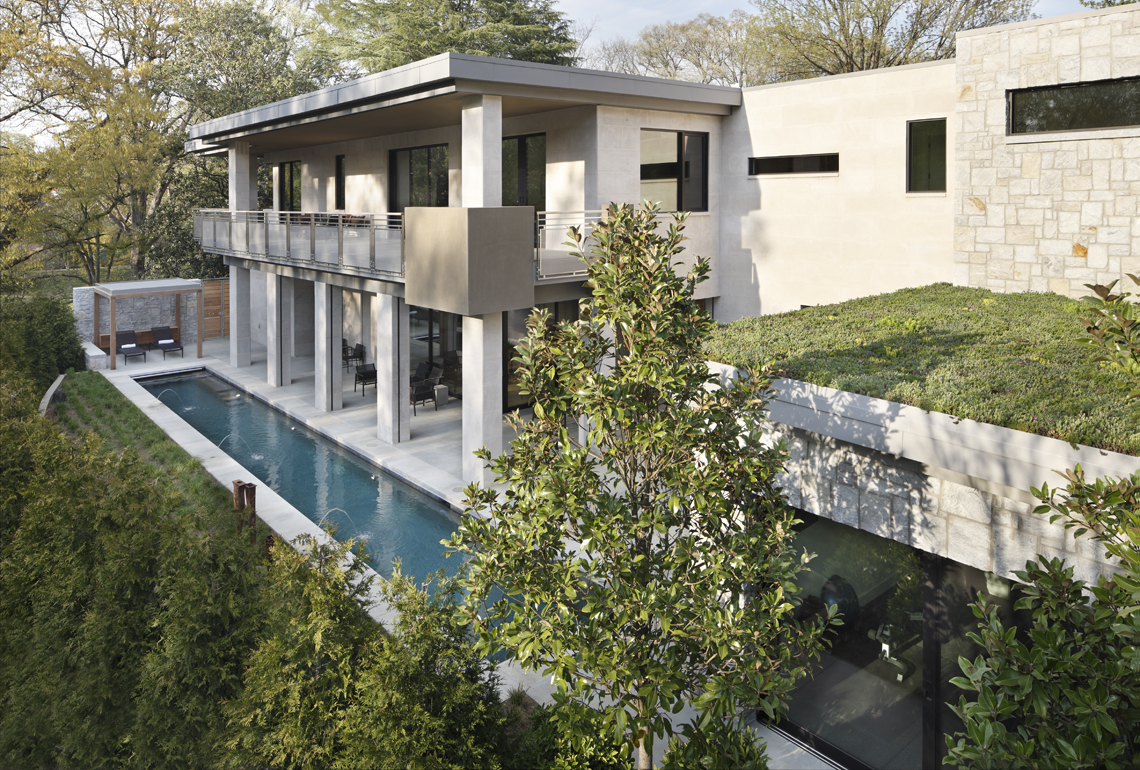

 In Ansley Park, a new residence emerged on a half-acre lot that had once been occupied by an apartment building destroyed by fire. To seamlessly integrate into the neighborhood, the design process involved a thorough study of existing homes and a deep understanding of their materials and front porch designs.
In Ansley Park, a new residence emerged on a half-acre lot that had once been occupied by an apartment building destroyed by fire. To seamlessly integrate into the neighborhood, the design process involved a thorough study of existing homes and a deep understanding of their materials and front porch designs.
The clients, relocating from Atlanta’s outskirts, sought a home that would connect with the street while maintaining privacy. This balance was achieved through large sliding glass walls that blur the boundary between interior and exterior spaces. To further enhance the connection to nature, the home features a geothermal system, high-performance windows, and insulation, as well as furniture crafted from wood harvested on-site. The collaboration with the clients extended to various aspects of the home’s design, including lighting, furniture, rugs, and even the entry door and handle, reflecting a meticulous attention to detail.
Lightroom 2.0
By Lightroom Studio, Decatur, Georgia
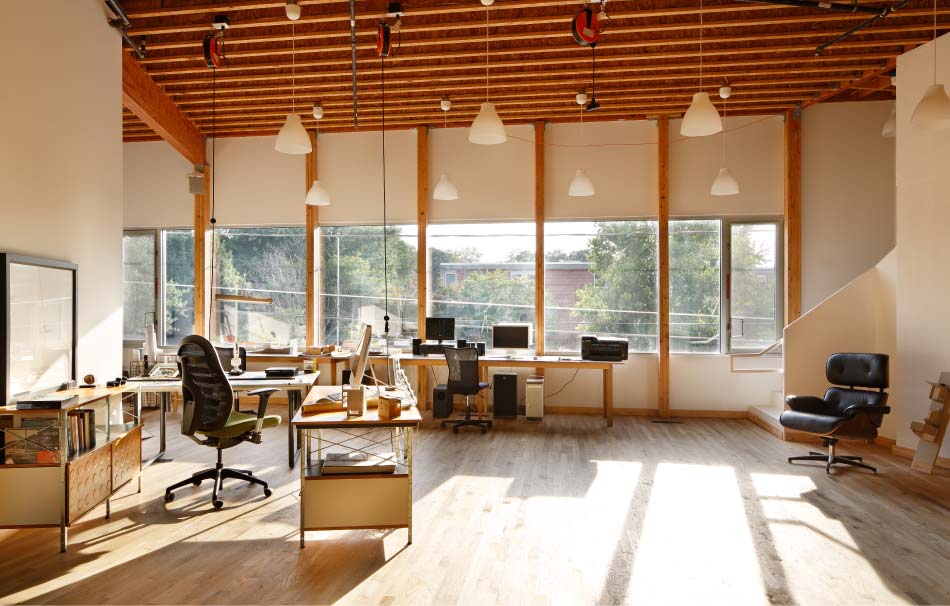
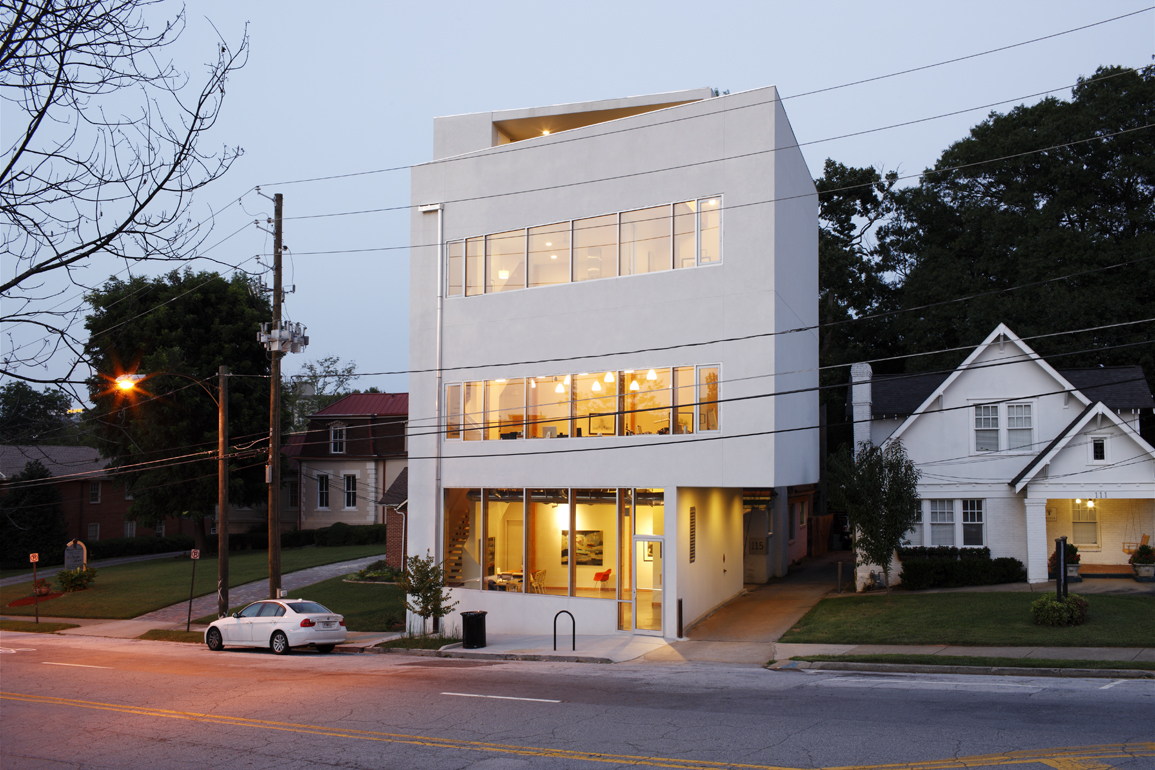
 Completed in 2011 in Decatur, Georgia, this project stands out in a town known for its livability and urban design. Inspired by artist Rachel Whiteread, the design team aimed to maximize space by purchasing air rights and expanding the usable floor plate. The building houses a modern art gallery, office, studio, and residential level with two bedrooms, two bathrooms, and a rooftop terrace with a movie theater offering views of Midtown Atlanta and surrounding forests.
Completed in 2011 in Decatur, Georgia, this project stands out in a town known for its livability and urban design. Inspired by artist Rachel Whiteread, the design team aimed to maximize space by purchasing air rights and expanding the usable floor plate. The building houses a modern art gallery, office, studio, and residential level with two bedrooms, two bathrooms, and a rooftop terrace with a movie theater offering views of Midtown Atlanta and surrounding forests.
The design integrates eastern and western sunlight to emphasize the passage of time. Engineered wood, including cantilevered veneer lumber and truss joists, form the project’s structure. Two tall shear walls allow for these engineering features, with the stairwell serving as an organizing element constructed of laminated plywood, referencing the work of Donald Judd and the Eames studio. Open risers in the staircase facilitate vertical interpenetration of space and light, while a wooden structural frame and large storefront windows frame the horizon line and sky uniquely from each level.
Architects: Want to have your project featured? Showcase your work through Architizer and sign up for our inspirational newsletters.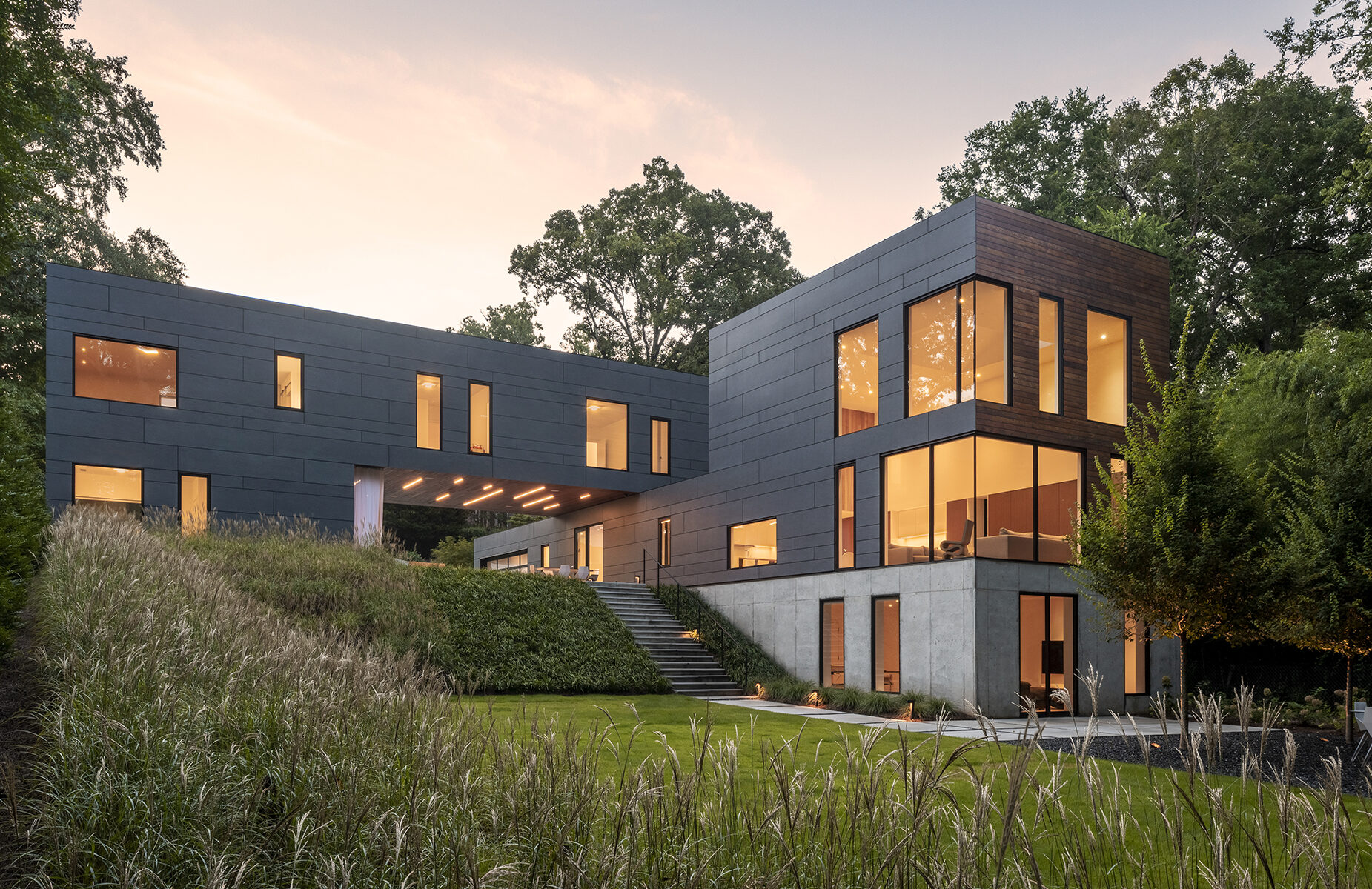





 Haus Gables
Haus Gables  Inchyra House
Inchyra House  Lightroom 2.0
Lightroom 2.0  Morningside Residence
Morningside Residence  Split Box House
Split Box House 